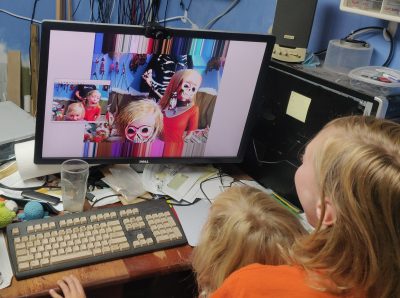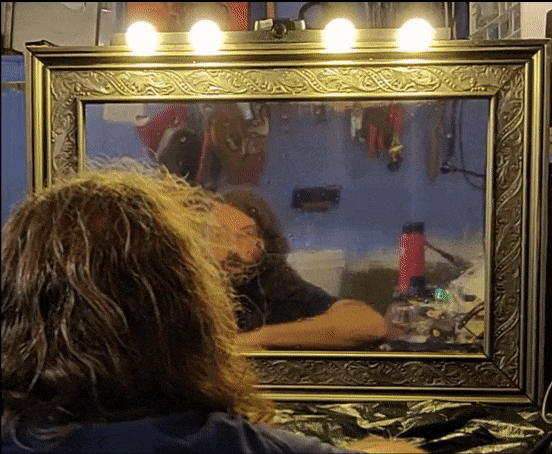We once thought that the best houses on Halloween were the ones that gave out full-size candy bars. While that’s still true, these days we’d rather see a cool display of some kind on the porch. Although some might consider this a trick, gaze into [Tim]’s mirror and you’ll be treated to a spooky version of yourself.
 Here’s how it works: At the heart of this build is a webcam, OpenCV, and a computer that’s running the Stable Diffusion AI image generator. The image is shown on a monitor that sits behind 2-way mirrored glass.
Here’s how it works: At the heart of this build is a webcam, OpenCV, and a computer that’s running the Stable Diffusion AI image generator. The image is shown on a monitor that sits behind 2-way mirrored glass.
We really like the frame that [Tim] built for this. Unable to find something both suitable and affordable, they built one out of wood molding and aged it appropriately.
We also like the ping pong ball vanity globe lights and the lighting effect itself. Not only is it spooky, it lets the viewer know that something is happening in the background. All the code and the schematic are available if you’d like to give this a go.
There are many takes on the spooky mirror out there. Here’s one that uses a terrifying 3D print.

















You might want to think again about the big flashing image a the top, or include an epilepsy warning in your title
I really appreciate the thought, but I’d also like to add some information to this conversation. Not all epileptic people are photosensitive, and people can be photosensitive without being epileptic. It should be a “photosensitivity warning”, not an “epilepsy warning” – maybe 3-5% of people with epilepsy are photosensitive, so calling it an ‘epilepsy warning’ is overgeneralizing.
I am not an expert on the subject since I do not actually have *photosensitive* epilepsy but this gif doesn’t really look anything like the test patterns I was subjected to when they were trying to see if I was photosensitive.